On a hot day, and in winter, especially when the car moves in traffic jams - the car often suffers from overheating. And if the driver does not pay attention to the engine overheating problem, believing that the cause is a high outdoor temperature, a trouble may occur with the car. The car engine may fail due to overheating, but the antifreeze leak can be caused by this. Based on this, we advise you to deal with the problem of engine overheating at the initial stage.
Content
Signs of cooling system malfunction
Antifreeze is coolantTo protect the engine from overheating, thereby increase the efficiency of the engine and save fuel.
The efficient operation of the engine, occurs at a certain temperature segment, and when the cooling system begins to malfunction, the engine increases the temperature and the driver can observe the following:
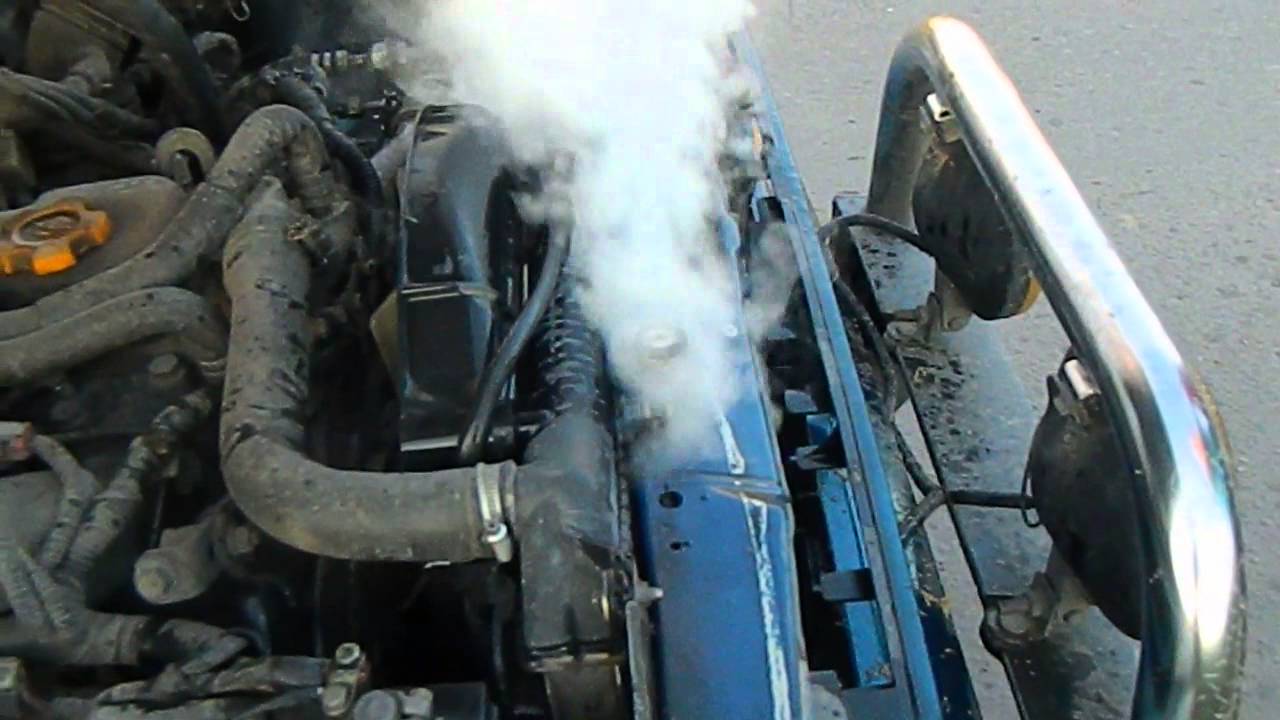
-par is knocked out of the hood;
- White smoke is visible from the muffler;
-The salon does not heat the stove;
- on dashboard, engine overheating signal;
-Terometer issues maximum value;
-New spots on the site of the car parking.
The driver can see only one sign, since the remaining signs of overheating may appear later.
But in any case, with such a scenario, the car needs to stop and make a thorough visual inspection.
Where the coolant is dried
If the driver, after stopping the car, looked under the hood, did not find antifreeze in an expansion tank, do not immediately rush into panic, you need to understand why the volume has decreased coolant And where could the cooling fluid might go.
There may be several reasons:
- low temperatures, coolant is capable of decreasing in volume, so it is necessary to add antifreeze and trace it in the future;
-Antifriz can flow through the slots and cracks of the expansion tank or cover, so visually inspect the tank and if everything says that a tank or a cracker cover, it is necessary to replace the expansion tank or the tank cover;
- the problem is possible in damage to the hoses, tubes, or the depressurization of the compounds occurred, leakage is possible from under the laying of the thermostat;
- perhaps a breakdown of heating radiator;
-Ard failure of the car cooling radiator;
-Ard failure of the pump is accompanied by leakage of antifreeze;
- perhaps, antifreeze got into engine oil (the worst version of the development of events);
Eliminate antifreeze leakage problems
If you analyze the reasons for reducing the volume of antifreeze in your car and install a specific malfunction - you can decide how to cope with this problem, remove it yourself or contact professionals to the service center.
In each case, it is necessary to figure out:
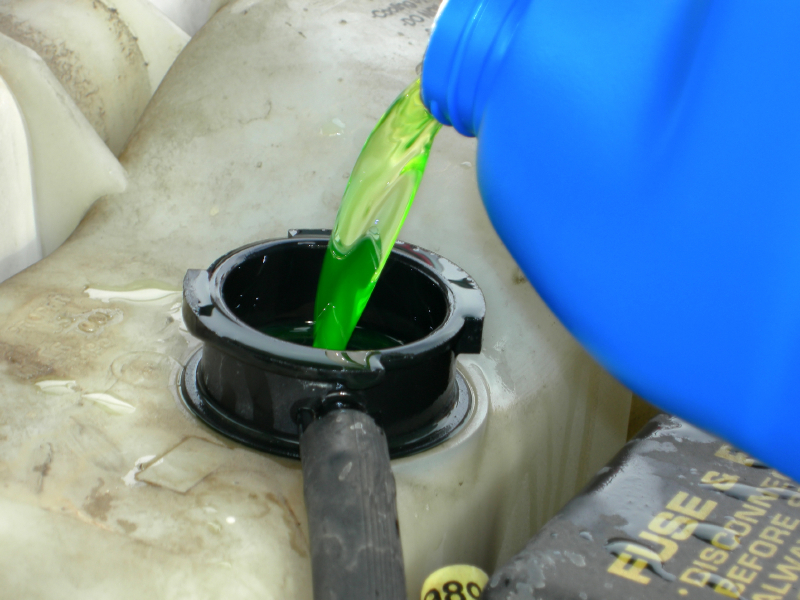
- negative outdoor air temperature. When coldly occurs, the coolant is capable of decreasing in the volume and the driver will only need to add antifreeze into the expansion tank. At the same time, it is impossible to dissolve antifreeze with water, otherwise the water will freeze and various breakdowns may occur, up to the engine breakdown;
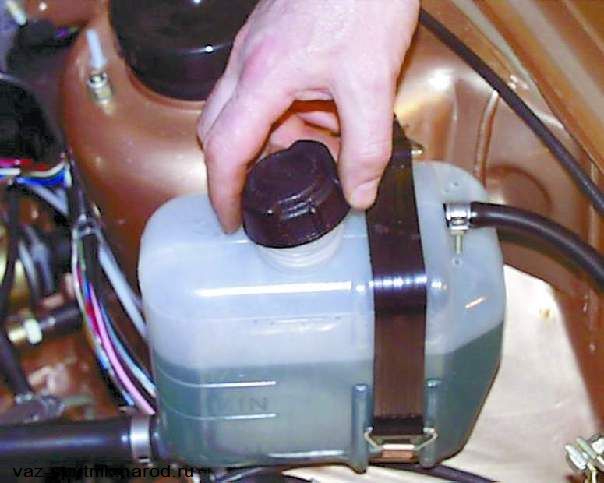
- perhaps a crack in the tank. If a crack appeared in a tank or lid - the coolant will quickly evaporate, and although you will pour antifreeze - this will not solve the problem. In this case, you need to replace the tank or cover.
Damage in cooling system connections
When suspected damage in the connections system - put a piece of cardboard over the night.

If in the junction system leakage, on cardboard, in the morning, detect stains. In this case, by adjusting high-quality workplace lighting, carry out a visual inspection of all hoses and tubes, connecting places with a radiator, inspect the thermostat gaskets.
The easiest way to do the inspection of rubber pipes, cracks may appear on rubber due to the rapid aging of the material, under the influence of high temperatures.
Nozzles need to be examined on all sides, for this you can use a mirror or check the quality of the rubber nozzle to the touch. If necessary, replace rubber pipes.
Since the above operation is performed with direct contact with the car, starting to work, give the car to cool so as not to get thermal burner.
If, after inspection, you did not find a leak in rubber nozzles, you need to check the quality of the connection tightening (clamps), try tightening the nuts of the clamps.
If you checked all connections and did not find leaks - proceed to check the pump. About the malfunction of the pump you can notify unpleasant screech, when the car starts, then the screech will stop.
Antifreeze can flow due to wear of the pox seal.
In this case, you will notice traces of splashing, to the surrounding details, around the axis of the pump rotation.
This problem is more complicated, the pump can be changed independently, or consult professionals.
Leak antifreeze in cooling radiator
Eliminate the flow or change the car cooling radiator is better to produce in specialized car repair centers.
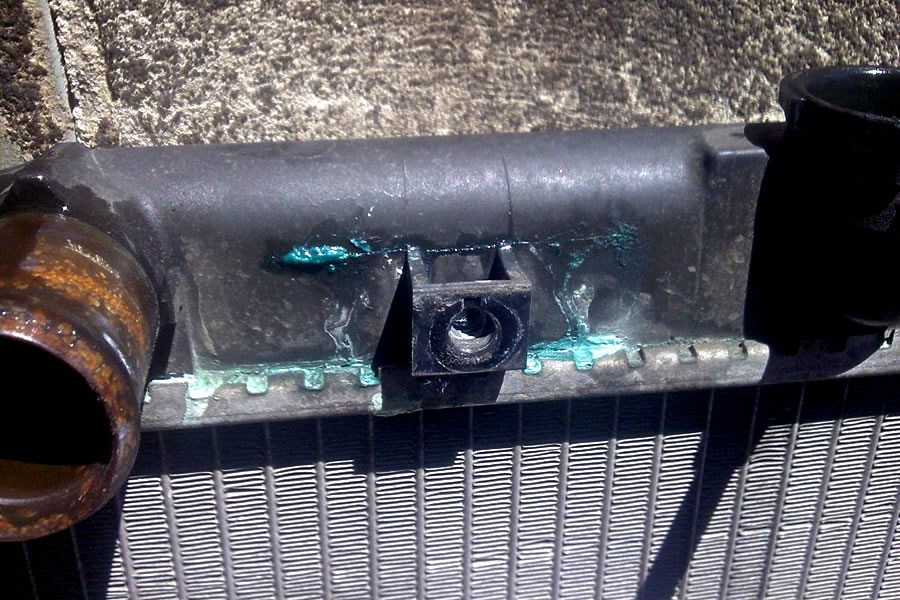
Antifreeze leak through heating radiator
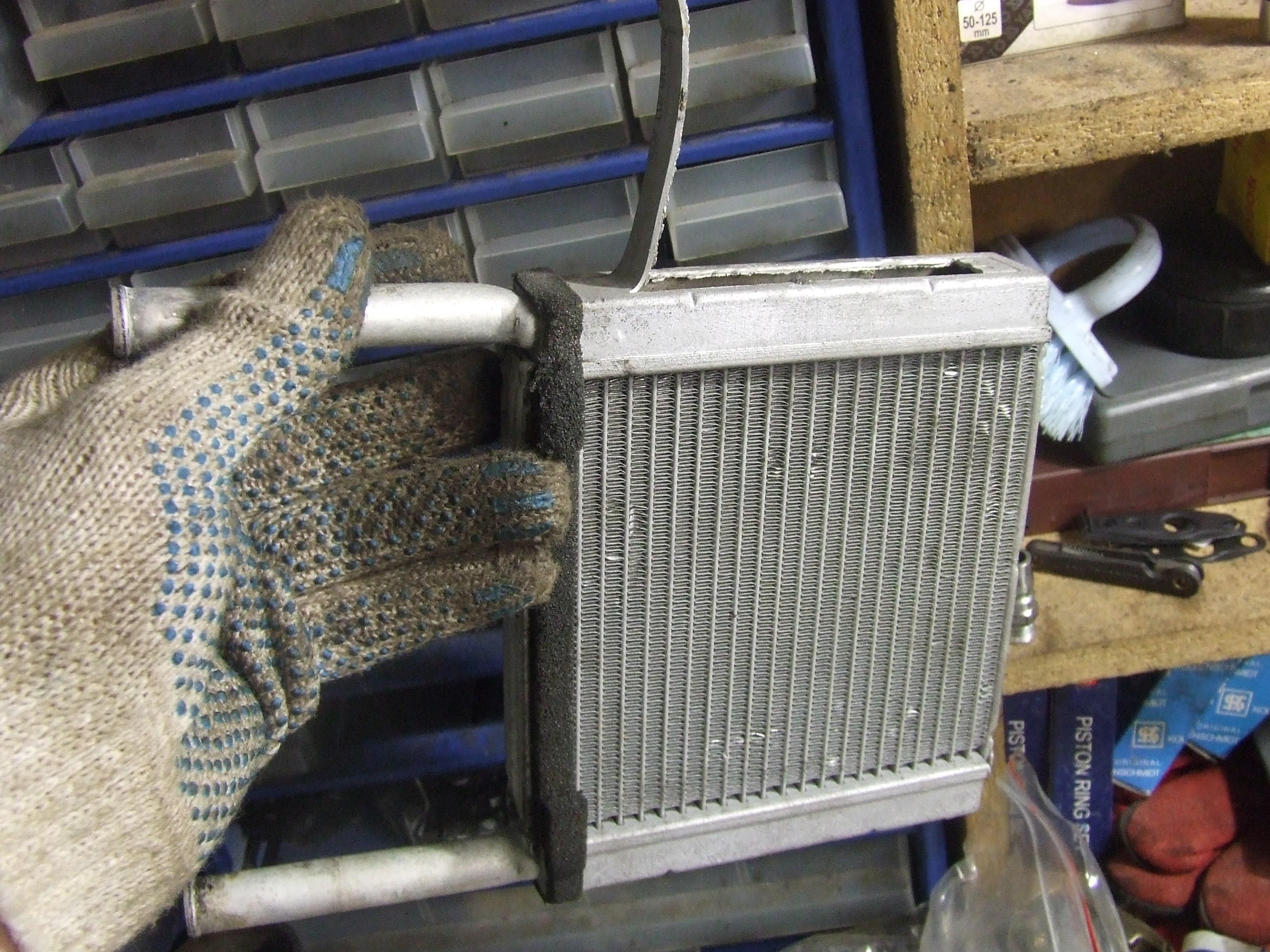
If the problem with the heating radiator, in this case, there will be constant fogging of the windshield, and near the chair, under the legs of the front passenger of the antifreeze. Urgently repair.
Radiator repair is better to entrust professional workers.
If antifreeze enters the engine oil
The cooling fluid can get into the oil channels if there are cracks in the metal of the cylinder block or the blocking of the block head came out.
In this case, antifreeze and oil are mixed, a foaming fluid is formed, which has low lubricating properties, the result is increased friction and the engine can jam.

Such a defect happens most often by the car, which has a mileage of more than 100,000 km.
Due to large loads, there is a breakdown of the cylinder block head.
If the gasket is made of metal, this laying is very reliable, and if the gasket is made of a paronite - it can quickly fail. The driver detects this malfunction when inspecting the detection of the Motor Oil level.
If traces of white foam are present on the dipstick, the antifreeze is mixed with oil.
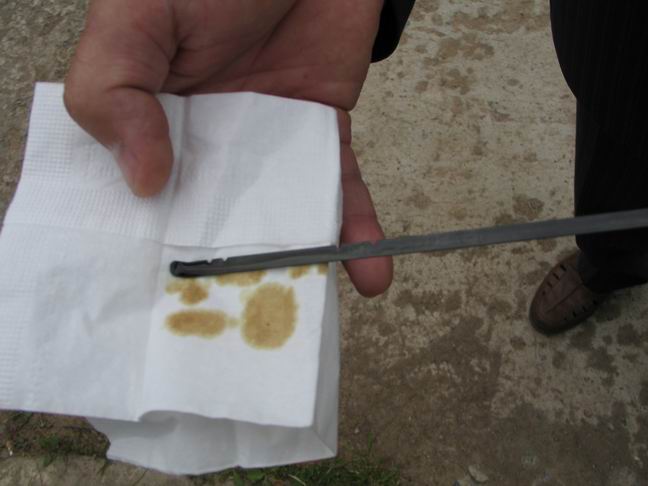
In addition, there will also be white spots on the ignition candles, the exhaust pipe will go white smoke, and in the cabin there will be a lightweight, sweet smell of antifreeze.
This malfunction can solve only maintenance station workers.
Related Materials
- Stove 2110, bad warm stove 2110, VAZ 2110 heating system, repairing the heating system VAZ 2110 with their own hands
- VAZ 2114 stove blows with cold air, stove 2114, bad warm stove VAZ 2114, device and repair of heating VAZ 2114 do-it-yourself, removing the stove VAZ 2114
- How to subdominize the car. How to put a jack. Types of jacks for cars.
- VAZ 2109 Fuse Block, VAZ 2109 Fuse Block Carburetor, VAZ 2109 Fuse Block Injector, Old VAZ 2109 Fuse Block, VAZ 2109 Fuse Block, VAZ Fuse Block 2109
- Car exhaust gas catalyst, faulty catalyst, pluses and cons of the catalyst, how to change the catalyst for the planeencitel
- Stove blowing cold air VAZ 2114, badly blowing the stove VAZ 2114, why badly blowing the stove VAZ 2114
- How to find out the owner of the car by the number of his car, check the car by the number of the traffic police machine, check the car by the state number of the car for free
- How to choose Used tires, Useful Tips
- Winter car road, pressure in passenger car tires in winter, good battery for the car in winter, whether to warm the car in winter
- In winter, the car is poorly started. How to make a car in winter, do you need to warm up the car in winter, useful tips
- Economy fuel consumption machines, the most economical car consumption
- Tires brands for passenger cars, labeling of car tire labeling, residual passenger car tire protector, how to pick a tire on a car brand, car tire tread pattern
- Working transmission operation, mechanical gearbox clutch work, driving with manual gearbox, useful tips
- Rear beam Peugeot 206 sedan, rear beam device Peugeot 206. Rear beam Peugeot 206 Malfunction, repair of the rear beam Peugeot 206
- Diesel fuel in winter, additive for diesel fuel in winter, how to choose the best diesel fuel
- Diesel winter does not start. How to start diesel in winter, heating diesel in winter.
- Japanese bridgestone tires, winter studded bridgestone tires, bridgestone tires brand
- Tire marking decoding for passenger cars, labeling wheels, how to choose the right tires on the disks
- Diesel engine in winter, launch of the diesel engine in winter, what oil to fill in a diesel engine in winter, useful tips
- LED backlight of the car, the backlight of the bottom of the car, the backlight of the legs in the car, the backlight in the door of the car, the backlight of the car is fine
- Recovered tires, bus tire, restored tire protector, can I use them
- Choose winter tires, which is a winter tires, which pressure in winter tires should be marked with winter tires, how to choose the right winter tires, the best winter tires 2019
- Steering rail rail, knock of steering rack, reasons for the knock and repair of the steering rack do it yourself
- Cameless car tires, a set for repair of tubeless tires, repair of the cannon-free tire do it yourself
- Russian tires, Russian tires Winter, Russian All-season tires, Voronezh AMTEL tires, Tires "Matador Omsk Tire", Kama-tires are world-class bus
- How to open a car without a key. Lost the key from the car what to do, the key from the car inside the car
- Silent tires, quiet winter tires, quiet studded bus, which tires to choose, overview tires
- Tires and safety, safety of the bus, why it is necessary to constantly monitor car tires
- Rules of safe driving of the car in the rain and slush, safe driving of the car for beginners
- Rust converter which is better for cars, rust converters to choose how to use rust transducer, professionals
- Polishing the body of the car do it yourself, how to choose a polishing paste, useful tips
- Engine durability, engine life, how to extend engine life
- Knock in the car. Knock when moving a car. What can knock in the car. How to determine the cause of the knock.
- ABS car, what is ABS car, ABS system malfunction, ABS diagnostics
- Overtaking a car when you can start overtaking a car, rules of traffic rules
- Fuel pump VAZ 2110, VAZ 2110 gas station scheme, VAZ 2110 fuel pump device, VAZ 2110 gas station repair,
- Automotive antennas for radio, automotive antenna device, car antenna do it yourself
- Front suspension Kalina, device front suspension Kalina, knock in front suspension Kalina, repair of front suspension Kalina
- Shock absorber Oil, best oil shock absorbers, pumping oil shock absorbers, how to properly pump oil shock absorber
- Clutch malfunctions, touches clutch, causes a clutch malfunction, how to eliminate
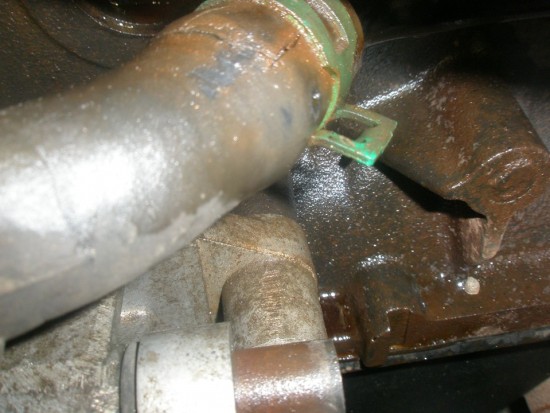






Comments